Rowan Moore in The Guardian:
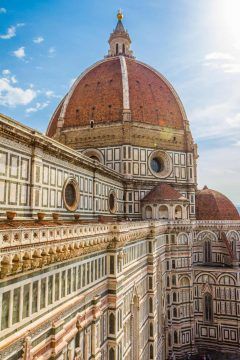 In 2019, a survey asked 3,624 Americans if Arabic numerals should be taught in school. An affronted 56% – and 72% of Republican respondents – said no. Only 29% said yes. The nos didn’t seem to know that Arabic numerals are the things they type with the keypads of their phones.
In 2019, a survey asked 3,624 Americans if Arabic numerals should be taught in school. An affronted 56% – and 72% of Republican respondents – said no. Only 29% said yes. The nos didn’t seem to know that Arabic numerals are the things they type with the keypads of their phones.
Something similar has happened with architecture. You can read titans of art history such as Kenneth Clark or Nikolaus Pevsner, who took upon themselves the task of defining European civilisation, and barely find a mention of the Great Mosque of Córdoba or the Alhambra in Granada – extraordinary and important works of architecture that are unarguably located in Europe. It’s a breathtaking omission. Acccording to Diana Darke, the thing called “gothic”, versions of which (Notre-Dame, Houses of Parliament) have been claimed as the national style of several northern European countries, which theorists such as John Ruskin and Augustus Pugin saw as quintessentially Christian, is deeply indebted to Arab and Muslim builders in the centuries following the life of Muhammad.
Pointed arches, ribbed vaults, spires, campaniles, rose windows, certain types of dome construction, variants of stained glass, the machicolations of castles, twin-towered cathedral fronts, possibly the cloister – all can be traced, says Darke, to older buildings in the Middle East and southern Spain. She argues that the trefoil arch – a three-lobed shape often used on churches as a symbol of the Trinity – is also Arab in origin. Through a hilariously mistaken belief that the Muslim Dome of the Rock in Jerusalem was Solomon’s Temple, a number of churches copied it.
More here.

 Over at Crooked Timber, first Chris Bertram:
Over at Crooked Timber, first Chris Bertram: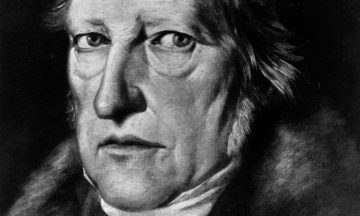 Philip Oltermann in The Guardian:
Philip Oltermann in The Guardian: Jesmyn Ward in Vanity Fair:
Jesmyn Ward in Vanity Fair: Julianne Chung in Psyche:
Julianne Chung in Psyche: Sara Tafakori in openDemocracy:
Sara Tafakori in openDemocracy: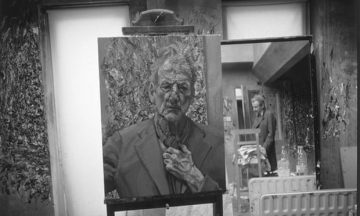 I
I “Next a lone spotlight shone on Odetta wearing a dark loose-fitting dress, and she began singing ‘Water Boy,’ or, rather, she unleashed it. Accompanying herself with her large National acoustic guitar, eyes closed, brows knitted in concentration, she brought the full tragedy and anger of chain gang life to bear.”
“Next a lone spotlight shone on Odetta wearing a dark loose-fitting dress, and she began singing ‘Water Boy,’ or, rather, she unleashed it. Accompanying herself with her large National acoustic guitar, eyes closed, brows knitted in concentration, she brought the full tragedy and anger of chain gang life to bear.”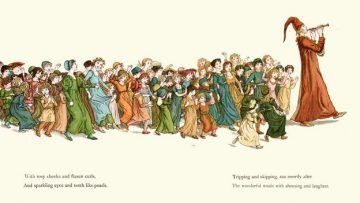 The tale in fact has survived for a very long time. Originating as medieval folklore, the story inspired a Goethe verse, Der Rattenfänger; a Grimm Brothers’ legend, The Children of Hamelin; and one of Robert Browning’s best-known poems, The Pied Piper of Hamelin. And although each writer tinkered with the story, the basics remained the same: the Piper was hired by Hamelin to rid the town of its plague of rats. Trailing after the hypnotic notes of the rat-catcher’s magical flute, the rodents politely filed through the city gates to their presumed doom.
The tale in fact has survived for a very long time. Originating as medieval folklore, the story inspired a Goethe verse, Der Rattenfänger; a Grimm Brothers’ legend, The Children of Hamelin; and one of Robert Browning’s best-known poems, The Pied Piper of Hamelin. And although each writer tinkered with the story, the basics remained the same: the Piper was hired by Hamelin to rid the town of its plague of rats. Trailing after the hypnotic notes of the rat-catcher’s magical flute, the rodents politely filed through the city gates to their presumed doom. When President Donald Trump canceled a visit to the Aisne-Marne American Cemetery near Paris in 2018, he blamed rain for the last-minute decision, saying that “the helicopter couldn’t fly” and that the Secret Service wouldn’t drive him there. Neither claim was true. Trump rejected the idea of the visit because he feared his hair would become disheveled in the rain, and because he did not believe it important to honor American war dead, according to four people with firsthand knowledge of the discussion that day. In a conversation with senior staff members on the morning of the scheduled visit, Trump said, “Why should I go to that cemetery? It’s filled with losers.” In a separate conversation on the same trip, Trump referred to the more than 1,800 marines who lost their lives at Belleau Wood as “suckers” for getting killed.
When President Donald Trump canceled a visit to the Aisne-Marne American Cemetery near Paris in 2018, he blamed rain for the last-minute decision, saying that “the helicopter couldn’t fly” and that the Secret Service wouldn’t drive him there. Neither claim was true. Trump rejected the idea of the visit because he feared his hair would become disheveled in the rain, and because he did not believe it important to honor American war dead, according to four people with firsthand knowledge of the discussion that day. In a conversation with senior staff members on the morning of the scheduled visit, Trump said, “Why should I go to that cemetery? It’s filled with losers.” In a separate conversation on the same trip, Trump referred to the more than 1,800 marines who lost their lives at Belleau Wood as “suckers” for getting killed.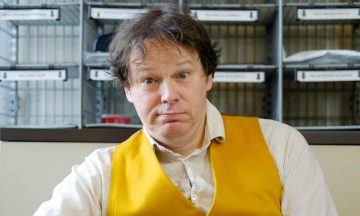 David Graeber, anthropologist and anarchist author of bestselling books on bureaucracy and economics including
David Graeber, anthropologist and anarchist author of bestselling books on bureaucracy and economics including  Quantum mechanics is more than a century old, but physicists still fight over what it means. Most of the hand wringing and knuckle cracking in their debates goes back to an assumption known as “realism.” This is the idea that science describes something—which we call “reality”—external to us, and to science. It’s a mode of thinking that comes to us naturally. It agrees well with our experience that the universe doesn’t seem to care what theories we have about it. Scientific history also shows that as empirical knowledge increases, we tend to converge on a shared explanation. This certainly suggests that science is somehow closing in on “the truth” about “how things really are.”
Quantum mechanics is more than a century old, but physicists still fight over what it means. Most of the hand wringing and knuckle cracking in their debates goes back to an assumption known as “realism.” This is the idea that science describes something—which we call “reality”—external to us, and to science. It’s a mode of thinking that comes to us naturally. It agrees well with our experience that the universe doesn’t seem to care what theories we have about it. Scientific history also shows that as empirical knowledge increases, we tend to converge on a shared explanation. This certainly suggests that science is somehow closing in on “the truth” about “how things really are.” Donald Trump is so unlike most people, and so especially unlike anyone raised under a conventional moral framework, that he’s perpetually misdiagnosed. The words we see slapped on him most often, like “fascist” and “authoritarian,” nowhere near describe what he really is, and I don’t mean that as a compliment. It’s been proven across four years that Trump lacks the attention span or ambition required to implement a true dictatorial regime. He might not have a moral problem with the idea, but two minutes into the plan he’d leave the room, phone in hand, to throw on a robe and watch himself on Fox and Friends over a cheeseburger.
Donald Trump is so unlike most people, and so especially unlike anyone raised under a conventional moral framework, that he’s perpetually misdiagnosed. The words we see slapped on him most often, like “fascist” and “authoritarian,” nowhere near describe what he really is, and I don’t mean that as a compliment. It’s been proven across four years that Trump lacks the attention span or ambition required to implement a true dictatorial regime. He might not have a moral problem with the idea, but two minutes into the plan he’d leave the room, phone in hand, to throw on a robe and watch himself on Fox and Friends over a cheeseburger.